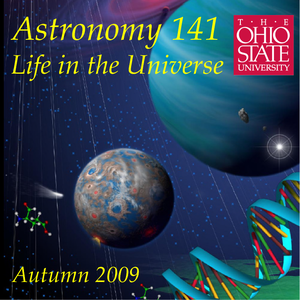🚀 From Google Podcasts to Moon FM in No Time: Your Hassle-Free Migration Guide
👉

Astronomy 141, Life in the Universe, is a one-quarter introduction to Astrobiology for non-science majors taught at The Ohio State University. This podcast presents audio recordings of Professor Richard Pogge's lectures from his Autumn Quarter 2009 class. All of the lectures were recorded live in 1005 Smith Laboratory on the OSU Main Campus in Columbus, Ohio.
Your feedback is valuable to us. Should you encounter any bugs, glitches, lack of functionality or other problems, please email us on [email protected] or join Moon.FM Telegram Group where you can talk directly to the dev team who are happy to answer any queries.